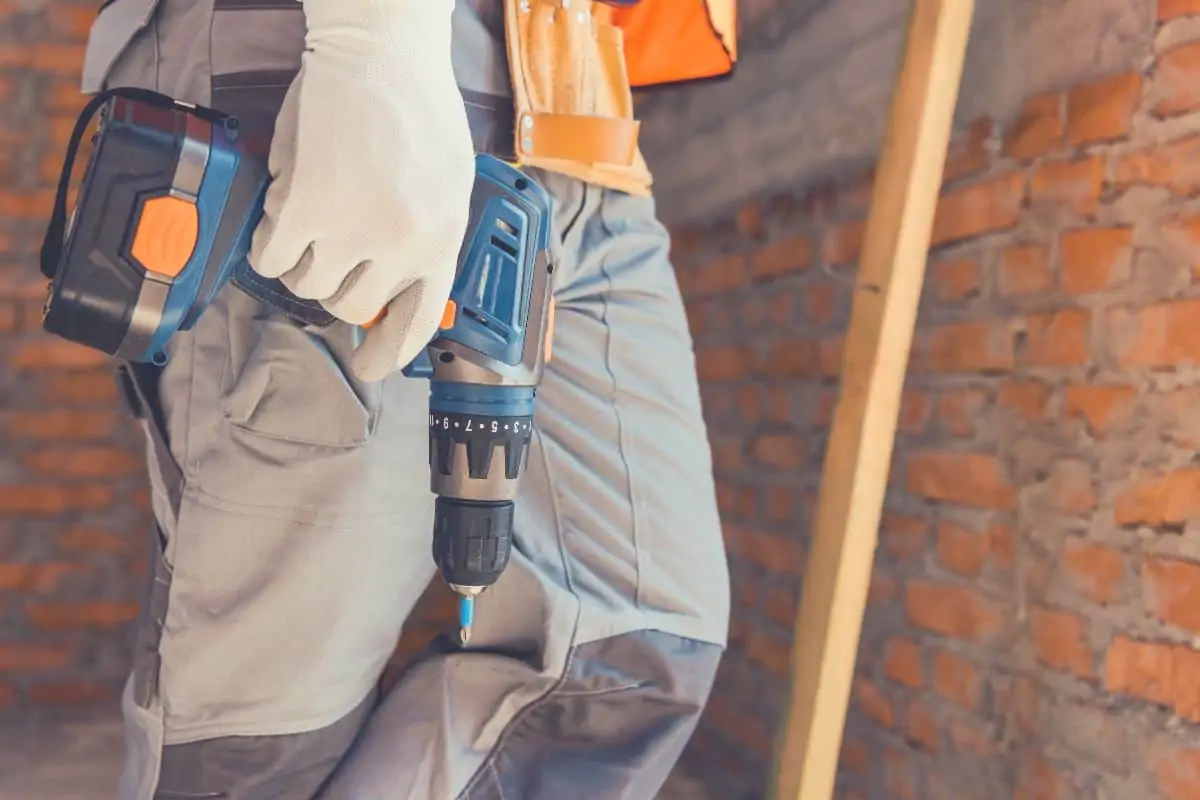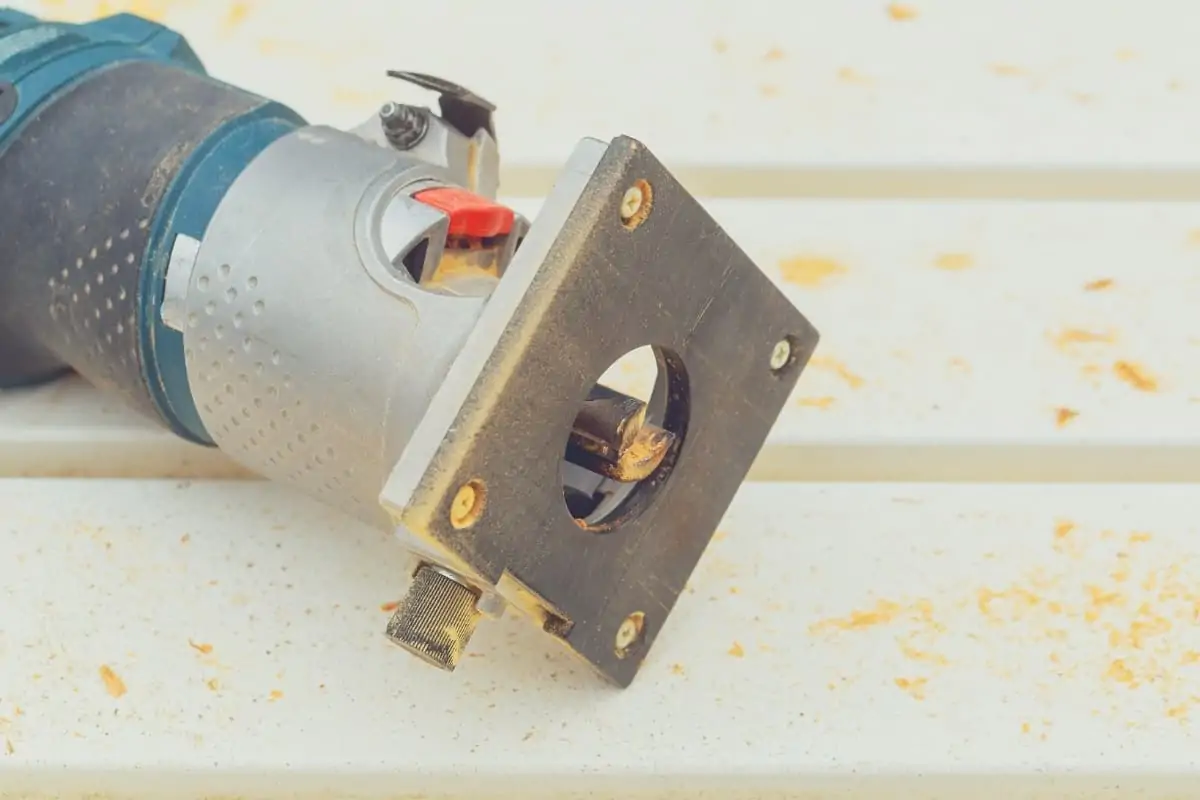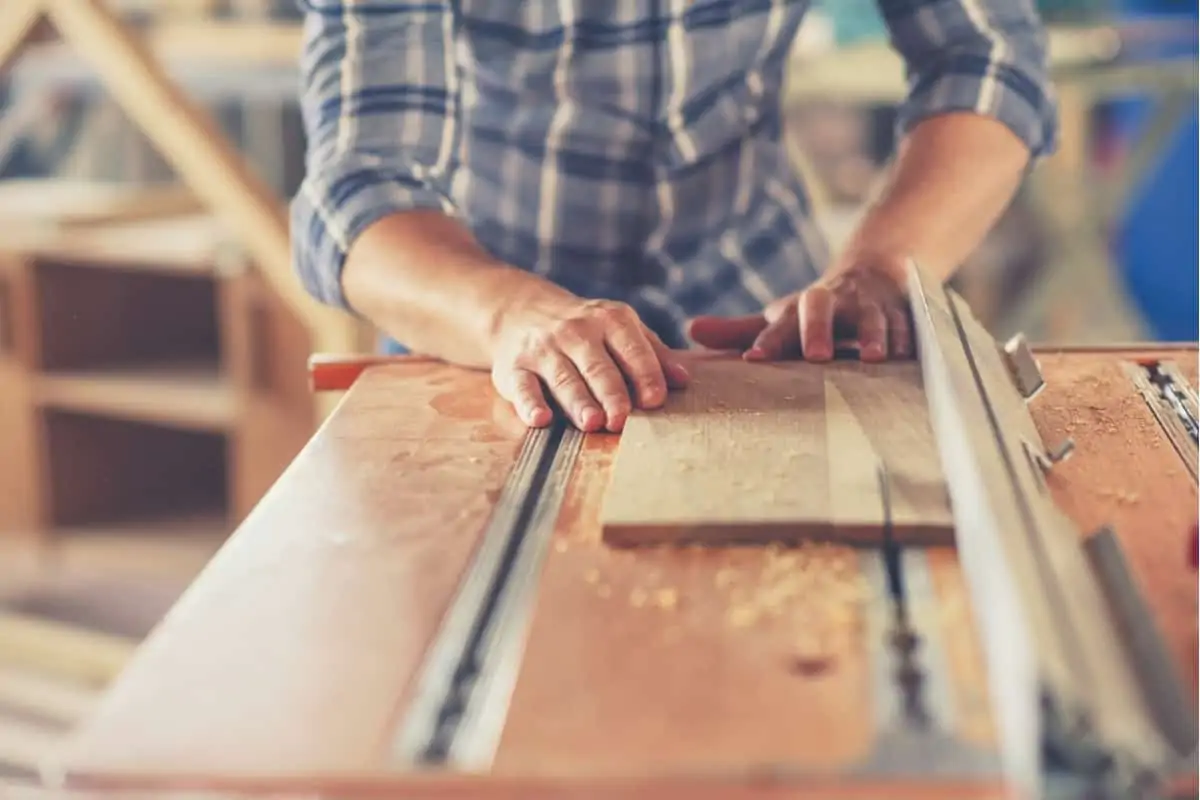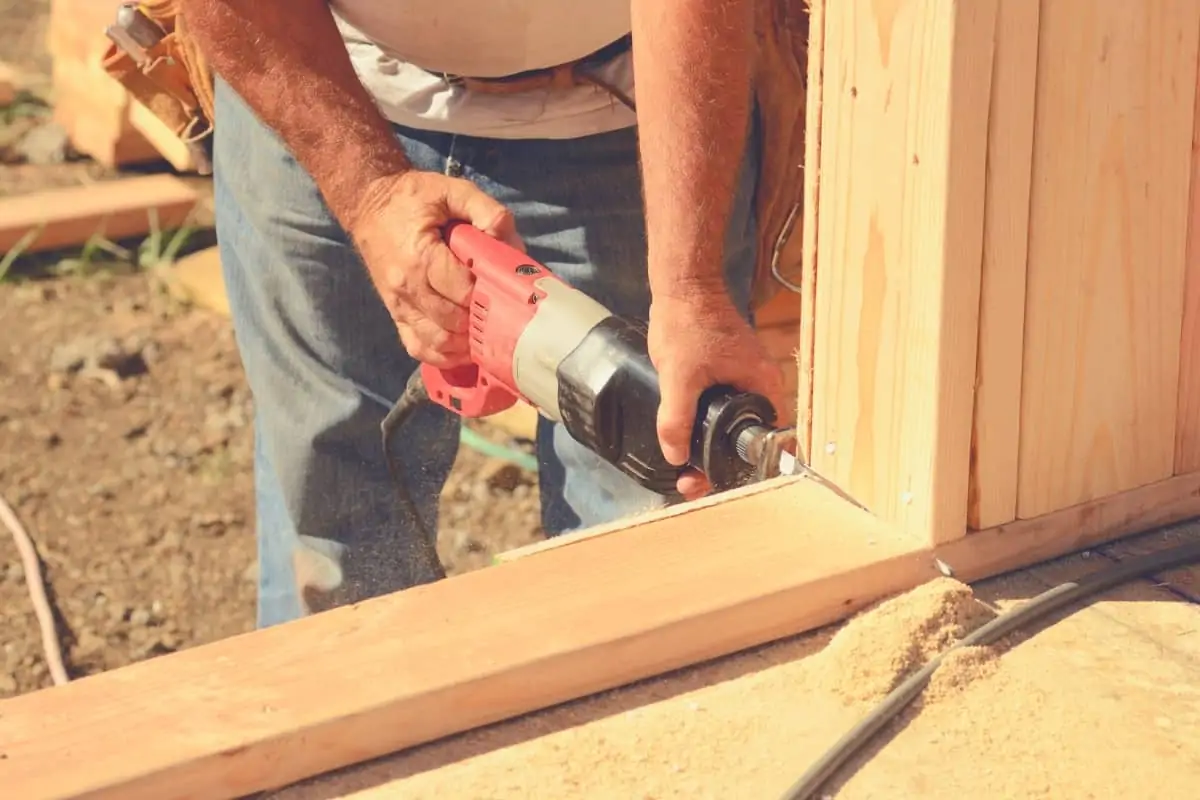As cordless power tool technology continues to progress, we’re starting to see more powerful, higher performance options that don’t require a long extension cord. Hammer drills are one of the many cordless power tools beginning to become just as viable as their corded counterparts.
Personally, I would gladly sacrifice some function in exchange for not needing to deal with cords, but you won’t have to do that with the options in this guide.
Our Top Picks for Best Cordless Hammer Drills 2023
I’ll walk you through my picks for what I think are the best cordless hammer drills in 2023 then follow up with a section which aims to give you all the information you need to choose the best cordless hammer drill for you.
Here’s a quick round up of what I think are the best cordless hammer drills in 2023:
- Top Pick – DEWALT DCD985B 20-Volt MAX Cordless Hammer Drill
- Best Value – PORTER-CABLE 20V MAX Hammer Drill (PCC620B)
- Milwaukee 2804-20 M18 Cordless Hammer Drill
- Makita XPH07Z 18V LXT Cordless Hammer Driver Drill
- Hitachi DV18DSDLP4 18-Volt Cordless Lithium-Ion Hammer Drill
Top Pick – DEWALT DCD985B 20-Volt MAX Cordless Hammer Drill
This cordless hammer drill from DEWALT is my favorite on this list, and not only because I tend to be a fan of DEWALT’s products. While it’s one of the more expensive drills on this list, its quality and features make it worth the price.
This drill has a highly efficient brushless motor, which when combined with the 20 volt power from the lithium ion battery pack, means up to 35 percent more battery life when compared with other cordless drills.
It has three speed settings, all delivered through a heavy duty all metal transmission. This gives you the flexibility to quickly switch, trading speed for torque, depending on the type of work you’re doing.
The built-in LED light to illuminate your work area is another great feature, it has a 20 second delay after you release the trigger. Ideal for quickly finding your next center mark if the background lighting isn’t too great.
The only issue I’ve noticed with this cordless drill is that the battery doesn’t always sit flush with the tool itself. It doesn’t fall out per se, but it does rattle around a bit, which can be distracting. Fortunately, it’s easy to fix with a bit of tape and doesn’t affect the tool’s overall function.
| Max. Speeds | 600-1250-2000 RPM |
| Voltage | 20 |
| BPM | 34000 max. |
| Item Weight | 3.9 lbs (without battery) |
| Warranty | 3 year |
Pros
- Powerful
- Reliable
- Long run time
Cons
- Low torque at high speeds
- Battery wobble can be distracting
All in all, this cordless drill from DEWALT is a great all-around option for any homeowner. It’s fast and powerful enough to work for professionals, but it’s not overly large or cumbersome. Overall, it combines the best aspects of a hammer drill and a driver drill into one reliable unit.
If you want to learn more about this drill click the button below.
Best Value – PORTER-CABLE 20V MAX Hammer Drill (PCC620B)
If the price tag on the DEWALT drill above made you balk, then consider looking at this alternative from PORTER-CABLE. Even though this drill is almost half the price of the DEWALT, I find it’s an excellent option for occasional home use, though it might be too weak for professional use.
This drill has a brushless motor, which is impressive considering its low price. Typically reserved for the higher end products this really shows the rate of development of cordless technology.
It only has 2 speed settings, which is slightly lower than most alternatives which tend to have three. It still gives you a high speed low torque option and a low speed high torque option. The unit’s price makes an acceptable concession in my mind – it makes this drill great for the hobby builder.
A built-in LED light is always a great feature, there’s nothing worse than struggling to see the center marks you’ve spent time and care making.
One thing to keep in mind with this unit is that it isn’t natively compatible with all of PORTER-CABLE’s 20V batteries. However, their other batteries can fit this unit with a little bit of modification, so this shouldn’t be much of an issue if you’re handy.
| Max. Speeds | 400-1600 RPM |
| Voltage | 20 |
| BPM | 27,200 max. |
| Item Weight | 3.6 lbs (without battery) |
| Warranty | 3 year |
Pros
- Very inexpensive
- Compact and light weight
Cons
- Only 2 speed adjustments
- Batteries aren’t natively universal
All in all, this drill could be a very appealing option for do-it-yourself-ers and hobby builders. While it might not make the cut as a professional hammer drill, it’s still an incredibly effective option for the price.
If you want to learn more about this drill click the button below.
Milwaukee 2804-20 M18 Cordless Hammer Drill
I’ve always been a fan of Milwaukee’s tools, and this cordless hammer drill from them does not disappoint. However, there is one concession: while this drill is full of power, it tends to overheat too quickly. This may be because this drill is designed to have a very high torque output.
This drill is a bit on the pricy side, at time of writing it’s about the same price as the DEWALT we looked at first. Like the other drill reviewed so far the Milwaukee is another brushless hammer drill. The voltage from the lithium ion battery pack is slightly lower at 18 volts. However thanks to the REDLITHIUM XC5.0™ technology, it’s claimed that not only is run time increased but so is the lifetime of the battery pack.
Despite having the best torque output on our list this is the most compact hammer drill I found – better for fitting into tight spaces than your traditional hammer drill.
As with all the drills mentioned so far the Milwaukee also comes with a LED light to illuminate the work area. This one differs slightly in that the light is at the foot of the tool with the intention of giving better illumination over the whole work area.
Because this drill is compact and uses a slightly smaller battery, it’s lightweight, but it doesn’t sacrifice on power. However, the most prominent standout feature of this drill is that it comes with a five-year warranty. The other options we’ve seen so far only come with three-year warranties.
| Max. Speeds | 550-2000 RPM |
| Voltage | 18 |
| BPM | 32,000 max. |
| Item Weight | 3.2 lbs (without battery) |
| Warranty | 5 year |
Pros
- Very powerful
- More compact and lightweight than competitors
- Five-year warranty
Cons
- Can overheat after sustained use
- A bit pricy
All in all, I think that this Milwaukee drill has a lot of potential. I wish it didn’t have an issue with overheating; otherwise, it might be a real contender for the top pick on this list. That doesn’t mean it’s not worth your consideration, though, especially with such a good warranty behind it.
If you want to take a look in more detail, click the button below.
Makita XPH07Z 18V LXT Cordless Hammer Driver Drill
While there’s not much to write home about with this drill, I find that I don’t have many complaints with it, either, which is a significant point in its favor.
Like all the other drills on this list, it comes with a brushless motor. Again great for efficiency and giving a motor life of up to 50% longer compared to a brushed motor. However as far as power and specs go, this drill is middle-of-the-road.
Slightly novel compared to other drill reviewed it does come with two LED lights built-in – one on each side. And while the battery doesn’t come with the drill Makita’s rapid optimum charger can charge up to three times faster and other lithium-ion batteries. This is always an advantage if you’re using the drill a lot and don’t want to be waiting around for batteries to charge.
Unfortunately, I have noticed one flaw with this drill that keeps it from being higher on this list. This drill doesn’t work well in reverse; the chuck has a weak point that can cause the chuck screw to snap under high load.
| Max. Speeds | 550-2100 RPM |
| Voltage | 18 |
| BPM | 34,000 max. |
| Item Weight | 5.9 lbs (without battery) |
| Warranty | 3 year |
Pros
- Powerful, high-torque drill
- Average price
Cons
- Weak in reverse
- No standout features
All in all, this drill is a great middle-of-the-road option perfect for DIYers and hobbyists.
Think this might be the drill you’ve been looking for? Click the link below to find out more.
Hitachi DV18DSDLP4 18-Volt Cordless Lithium-Ion Hammer Drill
This hammer drill from Hitachi is the only brushed-motor drill in this lineup so far, but while it’s a bit on the older side, it still has some redeeming features. The heavy duty construction, reliability, and quality of this drill speak volumes, even though it’s less powerful. I know I can count on this drill to serve me well for years to come.
While brushless motors are full of incredible technology, there’s something to be said of “old reliable,” too. However, this drill does show its age in some ways; for one, it’s no longer being manufactured and sold on Hitachi’s website, and it’s sold for wildly different prices all across the net.
The only complaint I have about this drill is its age. While it does have an older brushed motor that requires maintenance, its reliability offsets the maintenance requirement, in my opinion. As a nice bonus, this drill comes with a lifetime warranty, but keep in mind that this warranty only applies when “all parts are available.”
| Max. Speeds | 400-1,800 RPM |
| Voltage | 18 |
| BPM | 27,000 max. |
| Item Weight | 4.8 lbs (without battery) |
| Warranty | 2 year |
Pros
- Incredibly reliable
- Prices vary, so you may be able to snag it for cheap
- Limited lifetime warranty
Cons
- Older and may no longer be in production
- Not as powerful as newer drills
- The brushed motor requires maintenance
While this drill may not be the strongest on this list, it’s undoubtedly one of the most dependable. If you can find it for a reasonable price, it’s an excellent drill to add to your arsenal.
If you’re interested in learning more about this reliable old workhorse, click the link below.
What to Look for When Choosing the Best Cordless Hammer Drill
Just as you would when buying any power tool, you should decide which features and traits are most important to you before making your purchase. A cordless hammer drill is just one variety of drill, after all. The topics below cover some of the things you should consider when purchasing one but don’t be afraid to do your own research.
The Motor
The motor is the heart of your drill, and it will determine how well your drill handles difficult tasks. Since hammer drills are designed for boring through hard building materials like concrete, the size of the motor is less critical. Instead, you should consider whether you need a brushless motor or whether you can get away with a brushed motor.
The main difference you will see between brushed and brushless motors as a consumer is the price. Brushless motors are more expensive, but they also run colder and wear slower than a brushed motor. Brushless motors also tend to have better performance, but their complex parts can also be more prone to breakage.
For most builders, it will make sense to splurge for a good, high-quality drill with a brushless motor if you intend to use it often. If you only use your drill every so often for random household tasks, a brushed motor should suit your needs.
The Power
There are a few variables to look for when you’re looking at drill power levels. The first of these is RPM or rotations per minute. The faster your drill rotates, the quicker it will cut through your material, but the more heat and friction it will generate. A higher RPM will wear out your drill bit faster as well.
Torque, on the other hand, has an inverse relationship with RPM. Your drill will exert more torque at lower speeds. Torque is what you need to drive your screw or drill bit into treated woods and other sturdy materials.
BPM, or blows per minute (also known as IPM, or impacts per minute), describes how often your hammer drill “hammers” into your material. The higher your BPM, the faster and stronger your drill will be.
You should look for RPM, torque, and BPM numbers based on how you will be using your drill. For example, if you primarily use your hammer drill for slow, torque-heavy applications, you should look for higher torque and a lower RPM. If you tend to run your drill quickly, a high RPM might suit you better. If you tend to use your drill mostly for hard materials like concrete, you should look for a higher BPM.
The Battery
Of course, the battery in your drill is one of the most important things to consider – there’s nothing worse than a drill that dies on you when you’re not finished with it yet! Keep in mind that the more powerful your hammer drill, the faster it will use its battery. You can offset this by purchasing a bigger battery or by managing your drill’s power consumption.
Of course, if you really need uncompromising power in your hammer drill, the best thing to do is by a corded model, but that’s not what we’re looking at in this guide!
The Clutch
The clutch is an essential part of your drill that controls the amount of force behind it. The higher you set the clutch, the harder the motor will work to turn the screw – even if it ends up sending it through your board, concrete, or lumber entirely.
However, if you set your clutch too low, the mechanism will “slip,” allowing the motor to turn while the drill bit itself does not. This means that, if you’re trying to drill into hard material, you might not be able to get any purchase at all.
The key is to find the setting where the clutch will slip when your screw is driven to your desired depth, preventing over-driving or under-driving. Because different hammer drills have varying amounts of torque, you may have to experiment with your model until you find the magic number.
The Chuck
The chuck portion of a hammer drill can usually accept standard drill bits and special bits called “SDS bits.” These bits are designed to work with hammer drills. An SDS bit is allowed to freely move back and forth within the chuck when your drill’s hammer mode is engaged.
In contrast, a standard drill bit does not move back and forth within the chuck except when you’re installing or removing it. As you might expect, you shouldn’t use a standard drill bit in a hammer drill, and you also shouldn’t use an SDS bit with a standard drill. With drills that can switch between both functions, make sure to use the right bit for the job at hand.
Weight
There are several characteristics of your hammer drill that will affect its weight: its size, its battery, and its type. Your hammer drill will already be heavier simply by nature of being a hammer drill, but it will also be more cumbersome if it has a larger battery, has a brushed motor, or is just plain larger. A more powerful drill will often be more cumbersome than a less powerful model of the same type, too.
Comfort and Ergonomics
A given drill will be of little use to you if it doesn’t fit well in your hands. You’ll be able to do your best work will a drill that’s appropriately-sized and a good weight for personal use. However, there are things you can do to make a large, cumbersome hammer drill more comfortable to use, too. One of these things is the addition of a mid handle.
These handles grip directly behind the chuck on your drill. A mid handle will help you get more leverage for demanding tasks, especially those requiring a hammering drill.
Another handy little feature you’ll find on almost all cordless hammer drills is a belt clip. This just makes it quick and easy to free up both hands when required without having to find somewhere to put down your drill.
Warranty
The warranty that comes with your hammer drill will vary depending on the make and manufacturer. High-quality, expensive drills often have longer warranties than cheaper models. Make sure to consider this if you’re purchasing a drill that you expect to get years of use out of.
Conclusion
While there are many great drill options on this list, I think the best all-around choice is the DEWALT DCD985B. This drill has some of the best raw power specifications on this list, and it’s also reliable. While it has some minor (and fixable) battery issues, these can be remedied with a bit of creativity. All in all, it’ll be the best option for most builders, whether at-home hobbyists or professional builders.








